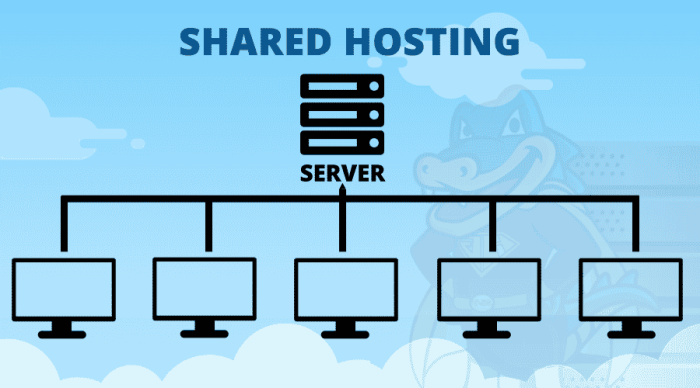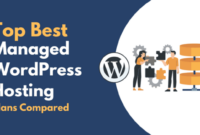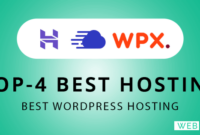Shared hosting for WordPress sites is a popular choice for many website owners looking for cost-effective hosting solutions. In this comprehensive guide, we will explore the ins and outs of shared hosting for WordPress, covering key features, setup process, security measures, scalability options, and more.
Understanding Shared Hosting for WordPress Sites

Shared hosting is a type of web hosting where multiple websites are hosted on a single server. This means that resources such as CPU, memory, and bandwidth are shared among all the websites on that server.
Looking for affordable web hosting services that won’t break the bank? Look no further! Our hosting plans are budget-friendly without compromising on quality or features. With reliable servers and excellent customer support, you can trust us to keep your website up and running smoothly.
Benefits of Using Shared Hosting for WordPress Sites
- Cost-effective: Shared hosting is typically more affordable compared to other types of hosting, making it a great option for small businesses or personal websites.
- Easy to set up: Shared hosting providers usually offer one-click WordPress installation, making it easy for beginners to get started with their website.
- Managed services: Many shared hosting providers offer managed services, taking care of server maintenance and security updates.
Drawbacks of Using Shared Hosting for WordPress Sites
- Resource limitations: Since resources are shared, your website’s performance can be affected by other sites on the same server.
- Security risks: The security of your website can be compromised if another site on the server is vulnerable to attacks.
- Limited customization: Shared hosting may have limitations on the software and settings you can use for your website.
Key Features to Look for in a Shared Hosting Provider for WordPress
- WordPress support: Ensure that the hosting provider offers WordPress-specific support and features.
- Uptime guarantee: Look for a hosting provider that guarantees a high uptime percentage to ensure your website is always accessible.
- Security measures: Check for security features such as SSL certificates, firewalls, and malware protection.
- Scalability options: Choose a hosting provider that allows you to easily upgrade your hosting plan as your website grows.
Setting Up WordPress on a Shared Hosting Platform

Setting up WordPress on a shared hosting platform is a straightforward process that can be accomplished in a few simple steps. Below is a step-by-step guide to help you get started with installing WordPress on your shared hosting server.
Step-by-Step Guide to Installing WordPress
- 1. Access your hosting account: Log in to your hosting account and navigate to the control panel.
- 2. Locate the auto-installer: Look for an auto-installer like Softaculous or Fantastico within your control panel.
- 3. Select WordPress: Choose WordPress from the list of available applications in the auto-installer.
- 4. Configure your settings: Enter the necessary details such as your site name, admin username, and password.
- 5. Install WordPress: Click on the install button to complete the installation process.
- 6. Access your WordPress site: Once the installation is complete, you can access your WordPress site by entering your domain name in a web browser.
Common Installation Issues and Troubleshooting
- 1. Database connection errors: Ensure that your database details are entered correctly in the installation process.
- 2. File permission issues: Set the correct file permissions for WordPress files and folders to avoid installation errors.
- 3. White screen of death: If you encounter a white screen after installation, deactivate plugins or switch to a default theme to identify the issue.
Tips for Optimizing WordPress Performance on Shared Hosting
- 1. Use a lightweight theme: Choose a lightweight and responsive theme to improve website speed on shared hosting.
- 2. Optimize images: Compress images and use lazy loading to reduce page load times.
- 3. Enable caching: Utilize caching plugins to store static versions of your site and speed up loading times.
- 4. Limit plugins: Only install necessary plugins to avoid unnecessary strain on your shared hosting server.
Managing Security on Shared Hosting for WordPress
When it comes to hosting a WordPress site on a shared server, security should be a top priority. Implementing best practices for securing your site, regularly updating software, and maintaining backups are essential to prevent security breaches.
Importance of Regular Updates and Backups
Regular updates to WordPress core, themes, and plugins are crucial for addressing security vulnerabilities and keeping your site protected. Additionally, having backups in place ensures that you can restore your site in case of a security incident or data loss.
Security Plugins and Tools
- Wordfence Security: A popular security plugin that offers firewall protection, malware scanning, and login security features.
- Sucuri Security: Provides website security monitoring, malware removal, and security hardening to protect your site from threats.
- iThemes Security: Offers features like brute force protection, file change detection, and two-factor authentication for enhanced security.
Scaling WordPress Sites on Shared Hosting

As your WordPress site grows in traffic on a shared hosting plan, it becomes crucial to implement strategies for scaling the site effectively. This involves optimizing performance and speed to ensure a seamless user experience.
Optimizing Site Performance and Speed
When it comes to optimizing site performance and speed on shared hosting environments, there are several strategies you can implement:
- Utilize caching plugins to reduce server load and improve load times.
- Optimize images and files to reduce page load times.
- Minimize the use of plugins and keep them updated to ensure compatibility and efficiency.
- Enable GZIP compression to reduce file sizes and improve loading speed.
Scalability Options from Different Shared Hosting Providers
Shared hosting providers offer various scalability options for WordPress sites to accommodate increased traffic and resource demands. Here are some common scalability options provided by different hosting providers:
- Automatic scaling based on traffic spikes to ensure consistent performance.
- Upgrade options to higher-tier shared hosting plans with more resources and capabilities.
- Load balancing services to distribute traffic effectively and prevent server overload.
- Content delivery networks (CDNs) to optimize content delivery and improve site speed globally.
In conclusion, Shared hosting for WordPress sites offers a convenient and budget-friendly hosting solution for WordPress users. By following best practices, optimizing performance, and staying vigilant with security measures, you can make the most of your shared hosting experience.
Need fast website hosting services to ensure your site loads quickly for visitors? We’ve got you covered! Our high-speed servers will help your website load in a flash, improving user experience and SEO rankings. Say goodbye to slow loading times with our hosting solutions.
Security is a top priority when it comes to secure web hosting services. Protect your data and your customers’ information with our top-of-the-line security measures. From SSL certificates to regular backups, we’ve got everything you need to keep your website safe from cyber threats. Trust us to keep your online presence secure.



